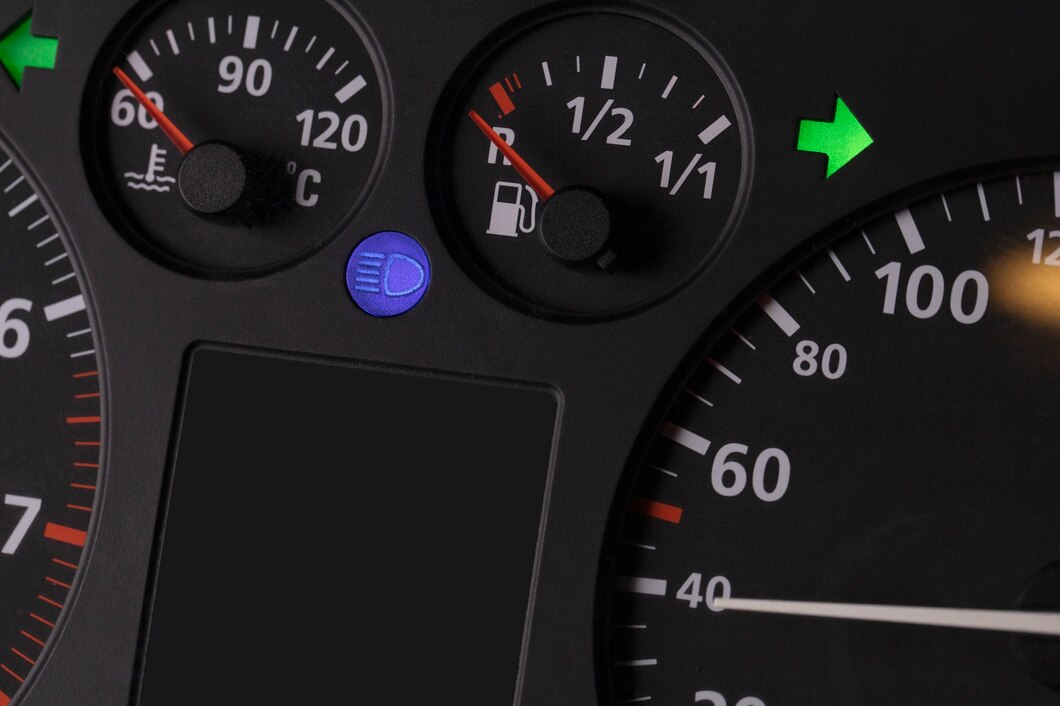The oxygen sensor, or O2 sensor, is a critical component of your car’s engine management system. It monitors the level of oxygen in the exhaust gases and helps the engine control unit (ECU) adjust the air-fuel mixture for optimal performance and emissions. A failing oxygen sensor can lead to various engine problems, decreased fuel efficiency, and increased emissions. Recognizing the early signs of a bad oxygen sensor can help you address the issue before it leads to more serious and costly repairs. Here are some key indicators that your car’s oxygen sensor may be failing.
1. Check Engine Light Is On
One of the most common signs of a bad oxygen sensor is an illuminated check engine light on your dashboard. The ECU continuously monitors the oxygen sensor’s performance, and if it detects a problem, it will trigger the check engine light. While the check engine light can indicate various issues, a diagnostic scan can help pinpoint whether the oxygen sensor is the culprit.
2. Poor Fuel Economy
A malfunctioning oxygen sensor can cause the engine to run either too rich (too much fuel) or too lean (too much air), resulting in poor fuel economy. If you notice a sudden decrease in your car’s fuel efficiency, it could be due to a bad oxygen sensor. Keeping track of your fuel mileage can help you identify any significant changes that may indicate a problem.
3. Rough Engine Idle and Misfires
An imbalanced air-fuel mixture caused by a faulty oxygen sensor can lead to rough engine idle and misfires. If your car shakes, vibrates excessively, or seems to stumble when idling, it might be due to a failing oxygen sensor. Engine misfires can also occur when the sensor sends incorrect signals to the ECU, affecting the combustion process.
4. Increased Exhaust Emissions
A bad oxygen sensor can lead to improper combustion, resulting in increased exhaust emissions. If your car fails an emissions test, the oxygen sensor could be to blame. Excessive black smoke or a sulfuric smell from the exhaust are also signs that the air-fuel mixture is not being properly regulated.
5. Engine Performance Problems
A faulty oxygen sensor can cause various engine performance issues, such as hesitation, stalling, or a lack of power. When the air-fuel mixture is not optimal, the engine may struggle to run smoothly, leading to these performance problems. If you notice any unusual behavior in your car’s performance, it may be worth checking the oxygen sensor.
6. Unusual Engine Sounds
A malfunctioning oxygen sensor can cause unusual sounds from the engine, such as pinging, knocking, or tapping. These sounds occur because the air-fuel mixture is not being correctly balanced, leading to improper combustion and potentially damaging the engine.
7. Failed Emissions Test
If your car fails an emissions test, it could be due to a bad oxygen sensor. The sensor plays a crucial role in controlling emissions, and when it fails, the engine may produce higher levels of harmful gases like carbon monoxide and nitrogen oxides. If your vehicle doesn’t pass the emissions test, have the oxygen sensor inspected and replaced if necessary.
Preventative Measures and Next Steps
If you suspect that your car has a bad oxygen sensor, it’s essential to address the issue promptly. Here are some steps you can take:
1. Diagnostic Check: Use an OBD-II scanner to check for error codes related to the oxygen sensor. Common codes include P0130, P0131, P0132, P0133, and P0134, which indicate different types of oxygen sensor malfunctions.
2. Professional Inspection: If you’re not comfortable diagnosing the problem yourself, take your car to a trusted mechanic. They can perform a thorough inspection and confirm whether the oxygen sensor is faulty.
3. Replace the Sensor: If the oxygen sensor is indeed the problem, replacing it is the best solution. Oxygen sensors are relatively affordable and easy to replace, but it’s important to use the correct part for your vehicle’s make and model.
4. Regular Maintenance: To prevent future issues, ensure your vehicle receives regular maintenance, including timely replacement of the oxygen sensor as recommended by the manufacturer. Regular check-ups can help you catch potential problems early and keep your car running smoothly.
A bad oxygen sensor can lead to a variety of issues, from poor fuel economy to engine performance problems. Recognizing the early signs of a failing oxygen sensor can help you address the problem before it becomes more serious. By staying vigilant and performing regular maintenance, you can ensure that your car remains in optimal condition, providing you with reliable and efficient performance.











